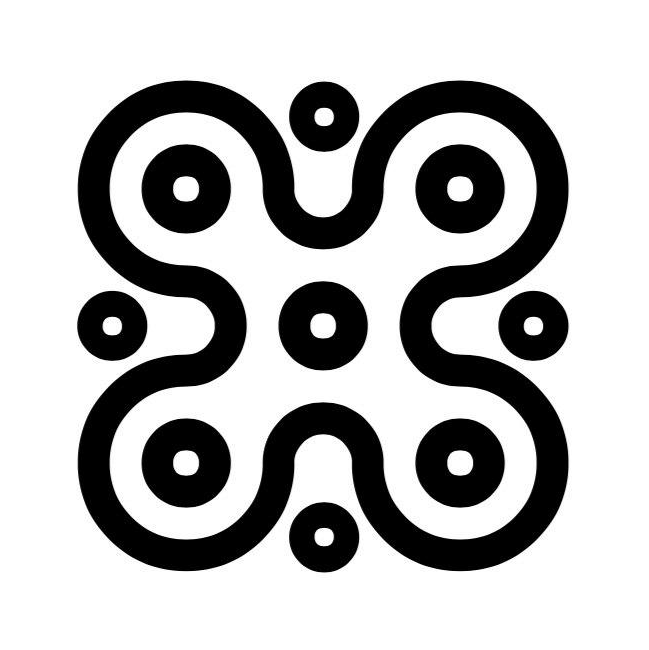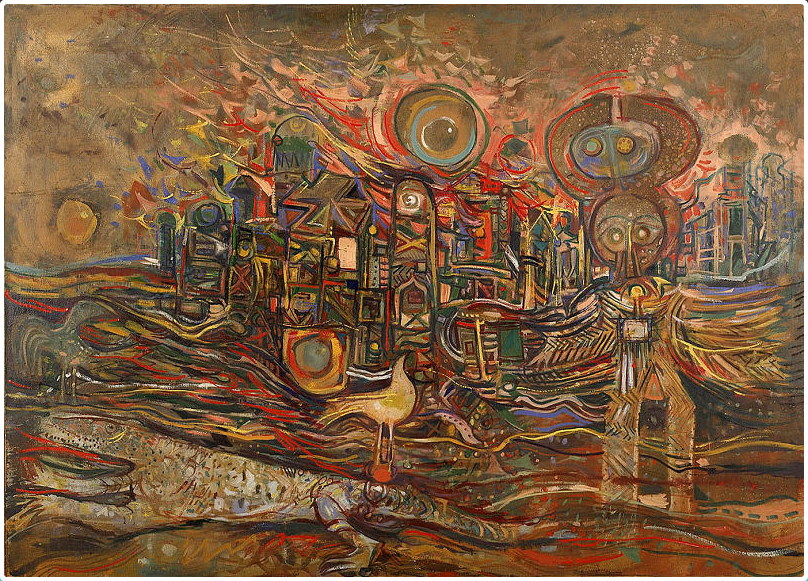Description
This image depicts the burning of Axum and Lalibela, two historically significant sites in Ethiopia. Here, the artist-seer prefigures the Ethiopian revolution of 1974 and illustrates the overturning of church and imperial hegemony in modern Ethiopia. The white bird in the center, poised as a phoenix, is witness to and survivor of the destruction, while the spirit figure on the right represents the past hoping to escape the violent present. Skunder has deconstructed spatial order to convey a sense of collision and shock, a metaphor for revolution and change. Alexander “Skunder” Boghossian was born in Addis Ababa, Ethiopia, in 1937. In 1955 he was awarded an Ethiopian government scholarship to study in Europe. He spent two years in London where he attended St. Martins School, Central School and the Slade School of Fine Art. He extended his sojourn in Europe another nine years as a student and teacher at the Academie de la Grande Chaumiere in Paris, and as a student and teacher in the atelier of Alberto Giacometti. In 1966 Boghossian returned to Ethiopia where he taught at the Fine Arts School in Addis Ababa until 1969. He made his first trip to the United States in 1970 and, except for a trip home when his father died in 1972, he spent the remainer of his life in the US. The 1974 revolution in Ethiopia prevented Boghossian from returning to Ethiopia. He lived in the USA as a permanent resident, and artist in exile. Boghossian taught at Atlanta University, Hampton University and from 1974 to 2003 at Howard University. As a practicing artist, Boghossian’s paintings have been shown in numerous solo and group exhibitions in Ethiopia, the Caribbean, Europe and North and South America.
The museum, formally renamed the National Museum of African Art in 1981, opened to the public in a new facility on the National Mall in 1987. Initially focused on the traditional arts of sub-Saharan Africa, NMAfA broadened its collecting scope and programs to include both modern and contemporary artworks, distinguishing itself as the first museum in the United States to include a sustained focus on modern and contemporary African art in its mission.
Through its collections research facilities, state-of-the-art conservation lab, groundbreaking exhibitions, educational outreach and public programs, the museum has expanded the parameters of the field of African art history and presented to the public a rich diversity of artistic traditions from throughout continent. The museum’s programs target audiences of all ages and offer a multifaceted view of Africa’s artistic traditions by incorporating cutting edge, contemporary and urban-focused performances and programs. Artist talks, films and lectures draw African art enthusiasts, area students, artists and collectors as well as individuals from the immigrant and expatriate communities. Let’s Read about Africa introduces children to current and classical literature about Africa; Studio Africa creates a comprehensive learning environment for DC-public schoolchildren by exploring African art and cultures through monthly workshops and hands-on activities; and the culinary program offers cooking demonstrations and tasting events that take inspiration from the museum’s exhibition program.
Warren Robbins’ inaugural vision—to teach visitors how to look at African art in the interest of promoting cross-cultural communication—remains at the heart of the National Museum of African Art’s mission today. Indeed, the museum will remain relevant to its diverse audiences and African constituents as it continues to promote and represent the rich artistic practices of Africa.
No ratings have been submitted for this product yet.


Reviews
There are no reviews yet.